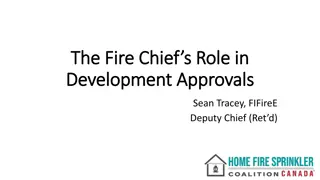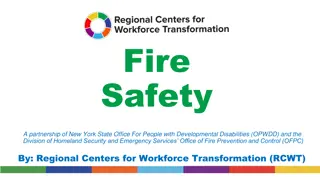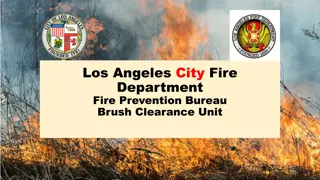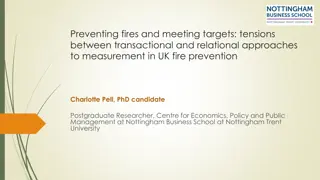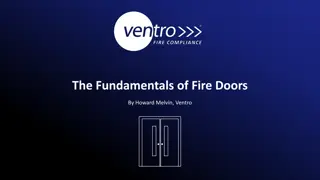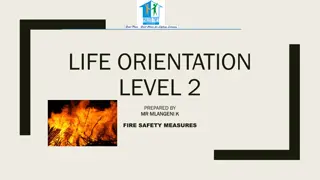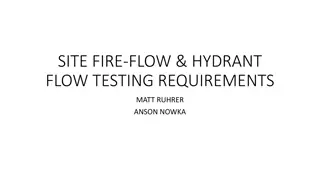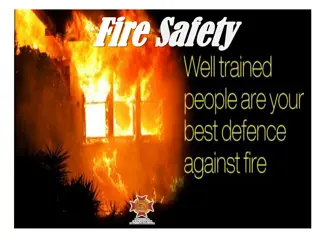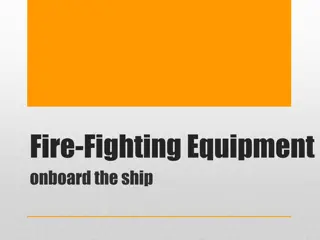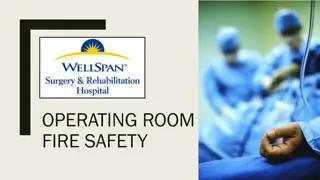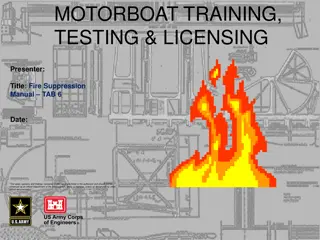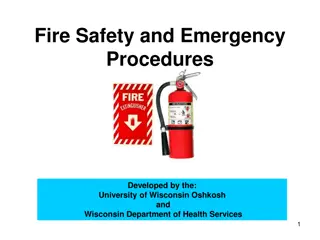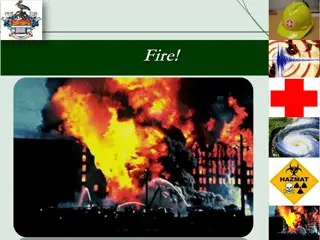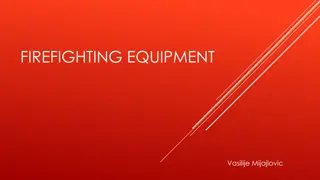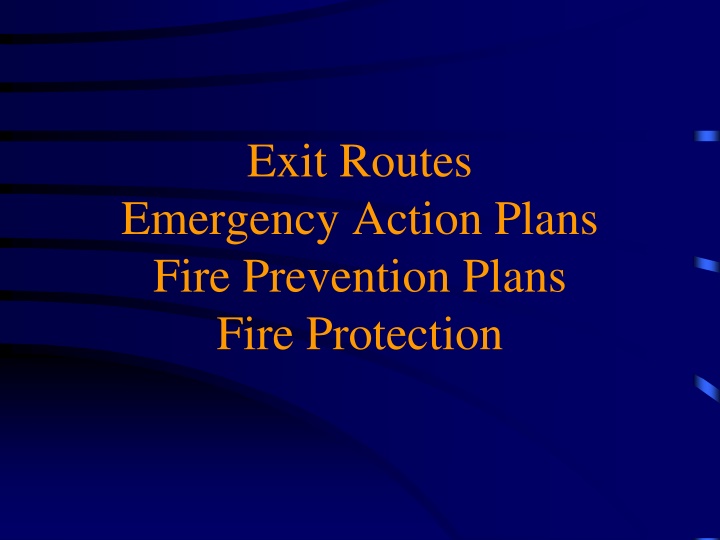
Comprehensive Fire Safety Guidelines and Procedures
Discover essential information on exit routes, emergency action plans, fire prevention, and protection measures for ensuring workplace safety. Learn about OSHA requirements, case studies, and critical elements of fire safety protocols to prevent incidents. Explore design requirements, maintenance guidelines, and key components of effective fire safety plans.
Download Presentation

Please find below an Image/Link to download the presentation.
The content on the website is provided AS IS for your information and personal use only. It may not be sold, licensed, or shared on other websites without obtaining consent from the author. If you encounter any issues during the download, it is possible that the publisher has removed the file from their server.
You are allowed to download the files provided on this website for personal or commercial use, subject to the condition that they are used lawfully. All files are the property of their respective owners.
The content on the website is provided AS IS for your information and personal use only. It may not be sold, licensed, or shared on other websites without obtaining consent from the author.
E N D
Presentation Transcript
Exit Routes Emergency Action Plans Fire Prevention Plans Fire Protection
Objectives Design and construction requirements for exit routes Maintenance , safeguards, and operational features for exit routes Emergency action plans Fire prevention plans Fire protection
OSHA Requires Employers to provide proper exits Fire fighting equipment Employee training Why are we here today?
Lessons learned December 31, 2004 Argentina club fire kills 175 April 27, 2008 Morocco Mattress Factory kills 55 February 20, 2003 Rhode Island Station nightclub kills 100
Exits Routes An exit must be permanent An exit must be seperated by fire resistant materials Openings into an exit must be limited The number of exits must be adequate
Exit door must be unlocked A side-hinged exit door must be used Capacity of an exit route must be adequate Exit route minimum height and width
Safeguards Dangers to employees must be minimized Lighting and Marking Exit routes must be maintained Alarm system must be operable
Emergency action plans Written and oral emergency action plans What elements make up an emergency action plan? Reporting Critical operations Accounting for employees Review of plan
Fire prevention plans List of all major fire hazards Controlling accumulations of flammable and combustible waste materials Maintenance to eliminate ignition Who s responsible for maintaining equipment
Fire Protection The employer is responsible for providing portable fire extinguishers Requirements Types, locations, inspections, and training
Fire extinguishers provided General principles of fire extinguisher use Hazards of incipient (beginning) stage fire fighting Employees designated to use extinguishers must receive instruction and hands-on practice in the operation of equipment
Portable Fire Extinguishers Extinguishers shall be distributed so that maximum travel distances apply: Class A Class B Class C Class D 75 feet 50 feet Based on appropriate pattern 75 feet
Quiz What is a Class A fire? A magnesium fire requires, what type fire extinguisher? What is the maximum travel distance to a Class B fire extinguisher?
Summary There must be enough exits in the proper arrangement for quick escape Exit routes must be marked, lighted, free of obstructions, and locks must not be used to impede or prevent escape An emergency action plan and a fire prevention plan must be in place
Summary Fire extinguisher classes and numerical ratings help a user understand its capabilities Fire extinguishers must be inspected, maintained and employees must be trained in how to use them
Training Resources National Fire Protection Association (NFPA) 1-800-344-3555 www.nfpa.org


